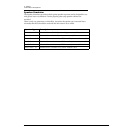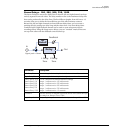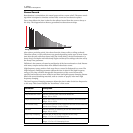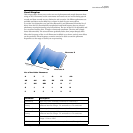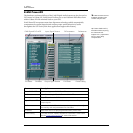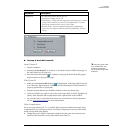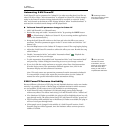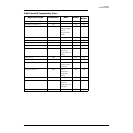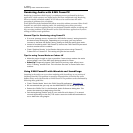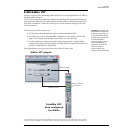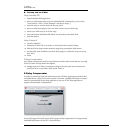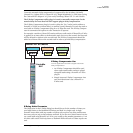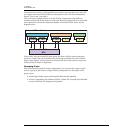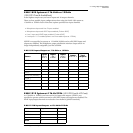
5 - Effects
Rendering Audio with E-MU PowerFX
82 Creative Professional
Rendering Audio with E-MU PowerFX
Rendering (sometimes called Export) is a mixdown process performed by the host
application, which creates a new digital audio file from a multitrack song. Rendering
allows a virtually unlimited number of VST effects to be used because the audio
processing is performed out of realtime.
E-MU PowerFX and the PatchMix DSP effects are strictly realtime processes. When E-MU
PowerFX are used while rendering audio, the rendering process must proceed at
realtime rate. Some host applications are not designed to handle realtime rendering and
this can cause problems. E-MU PowerFX can be used with these applications if you are
willing to follow certain guidelines.
General Tips for Rendering using PowerFX
• If an error message occurs, increase the “ASIO Buffer Latency” setting located in
the device Setup dialog box. Depending on your setup, you may have to
increase or decrease the Buffer Latency settings to find the setting that works.
• Instead of rendering with E-MU PowerFX, bounce the E-MU PowerFX processed
tracks to another track in realtime.
• Check “Realtime Render” in the Render dialog box when using Cubase LE,
Cubase SX2 or Cubase SL2. This setting will give the best results.
Tips for using Freeze Mode on Cubase LE
•Make the project length as short as possible. Freeze always renders the entire
project length, even if the MIDI track being rendered is shorter.
• Great Tip: Temporarily bypass E-MU PowerFX (and any other effects) even
when “Freezing” another track. This will allow the track to Freeze faster than
realtime.
Using E-MU PowerFX with WaveLab and SoundForge
Stuttering in the audio can occur when rendering with SoundForge or any version of
Steinberg WaveLab. This problem is caused by discontinuities in the first few audio
buffers as they are fed by WaveLab to E-MU PowerFX. The problem can be eliminated by
following these guidelines.
• Check “Render Mode” box in the E-MU PowerFX preferences. See page 79.
•We recommend that you only use the MME/WAVE E-DSP Wave [xxxx] drivers.
• Reduce the “Buffer Size” in the WaveLab, Audio Preferences dialog box. This
moves the stuttering to beginning of the file.
• Pad the beginning (and/or end) of your audio file with silence (.5 to several
seconds depending on the file). This action causes the buffer discontinuities to
occur
before
the song begins.



